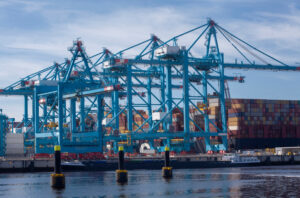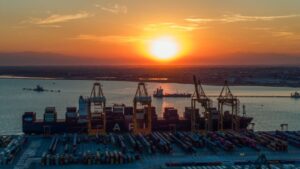China’s government has released a white paper that calls for countries around the Arctic to improve international trade by developing a “Polar Silk Road” out of the shipping routes that have opened up as a result of climate change.
China's Arctic Policy, issued by the State Council Information Office, has encouraged enterprises to construct infrastructure for the routes and to conduct commercial trial voyages to pave the way for regularized operation.
The paper has stated that China “respects the current powers of the Arctic States in the waters subject to their jurisdiction”, which is covered by treaties and general international laws such as the Charter of the United Nations, the United Nations Convention on the Law of the Sea (UNCLOS) and the Spitsbergen Treaty.
The states in the Arctic, the area of land and sea north of the Arctic Circle that totals about 21 million square kilometers, include the islands and countries in the northernmost landmasses of Europe, Asia and North America adjacent to the Arctic Ocean, with a combination of different sea areas.
China has started investigating the navigational security and logistical capacities of the Arctic shipping routes, comprised of the Northeast Passage, Northwest Passage, and the Central Passage (shown below), through hydrographic surveys.
The Polar Silk Road would support China’s investments in container shipping companies, ports and other forms of intermodal container transport along the modern-day Silk Road, which has strengthened the country’s grip on trade by connecting it by land and sea to Southeast Asia, Pakistan and Central Asia, and beyond to the Middle East, Europe and Africa.
Spanning an estimated 65 countries, China’s “Belt and Road” Initiative can claim to cover roughly 70% of the world’s population. https://t.co/rzTsbum45Z pic.twitter.com/6syIlm9Bqi
— CSIS (@CSIS) January 23, 2018
Chinese terminal operators have majority stakes in terminals in Europe. European terminal operators have no majority stakes in China pic.twitter.com/VEc71za6ku
— Olaf Merk (@o_merk) January 27, 2018
Read 'Shipping on the Northern Sea Route', a technical paper on the NSR, which explains more about the term used by Russia to describe the sea area between Novaya Zemlya island in the west to the Bering Strait in the east and out to 200 nautical miles from shore
The Chinese government said it that its development of the Polar Silk Road would abide by the International Code for Ships Operating in Polar Waters (Polar Code), and support the International Maritime Organization in playing an active role in formulating navigational rules for the Arctic.
There is currently no single comprehensive treaty for all Arctic affairs, but China’s white paper has declared that any disputes over the Arctic shipping routes should be properly settled in accordance with international law.
In its conclusion, the white paper stated: “The future of the Arctic concerns the interests of the Arctic States, the wellbeing of non-Arctic States and that of the humanity as a whole.
“The governance of the Arctic requires the participation and contribution of all stakeholders.
“On the basis of the principles of “respect, cooperation, win-win result and sustainability”, China, as a responsible major country, is ready to cooperate with all relevant parties to seize the historic opportunity in the development of the Arctic, to address the challenges brought by the changes in the region, jointly understand, protect, develop and participate in the governance of the Arctic, and advance Arctic-related cooperation under the Belt and Road Initiative, so as to build a community with a shared future for mankind and contribute to peace, stability and sustainable development in the Arctic.”










